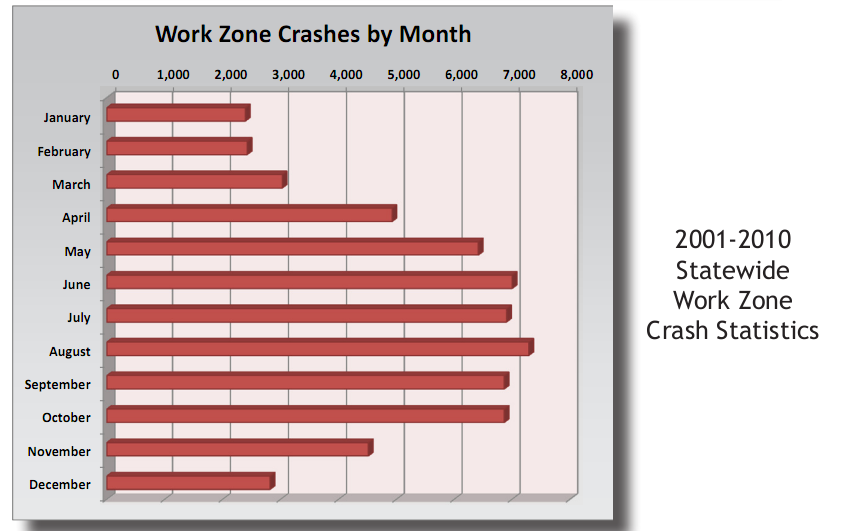
Drivers take heed: You are more likely to be injured or killed in a work zone on a dry and sunny August afternoon than any other time of year. That’s what Ohio Department of Transportation (ODOT) safety experts discovered after analyzing 10 years of crash statistics. In a report just released by ODOT, data shows that there were 5,038 work zone crashes last year resulting in 1,262 injury crashes and 10 fatal crashes – down from 5,105 crashes, 1,286 injury crashes, and 13 fatal crashes in 2009.
While there is no upside when talking about injuries and deaths in work zones, the data is promising. Since 2001, the number of crashes in work zones has gone down 37 percent and the number of fatal crashes has dropped by 50 percent.
“ODOT does all it can to ensure the safety of its workers and the motoring public,” said ODOT Director Jerry Wray. “But to see a real reduction in work zone crashes, certain driver behaviors need to change.”
According to ODOT’s analysis, the top three causes of work zone crashes can be prevented. They include following too closely, failure to control and improper lane changes.
The best advice: How you drive keeps you alive.
To help motorists better navigate through work zones, ODOT continually utilizes new technology and refines its policies.
Beginning this year, ODOT will require its contractors to use high-intensity flashing lights and reflective tape on all equipment in work zones. Additional signing and special warnings for motorcyclists have been added in recent years.
For up-to-the-minute road conditions and details on highway construction projects in every area of the state, visit ODOT’s website www.BuckeyeTraffic.org.
Drivers take heed: You are more likely to be injured or killed in a work zone on a dry and sunny August afternoon than any other time of year. That’s what Ohio Department of Transportation (ODOT) safety experts discovered after analyzing 10 years of crash statistics. In a report just released by ODOT, data shows that there were 5,038 work zone crashes last year resulting in 1,262 injury crashes and 10 fatal crashes – down from 5,105 crashes, 1,286 injury crashes, and 13 fatal crashes in 2009.
While there is no upside when talking about injuries and deaths in work zones, the data is promising. Since 2001, the number of crashes in work zones has gone down 37 percent and the number of fatal crashes has dropped by 50 percent.
“ODOT does all it can to ensure the safety of its workers and the motoring public,” said ODOT Director Jerry Wray. “But to see a real reduction in work zone crashes, certain driver behaviors need to change.”
According to ODOT’s analysis, the top three causes of work zone crashes can be prevented. They include following too closely, failure to control and
improper lane changes.
The best advice: How you drive keeps you alive.
To help motorists better navigate through work zones, ODOT continually utilizes new technology and refines its policies.
Beginning this year, ODOT will require its contractors to use high-intensity flashing lights and reflective tape on all equipment in work zones. Additional signing and special warnings for motorcyclists have been added in recent years.
For up-to-the-minute road conditions and details on highway construction projects in every area of the state, visit ODOT’s website www.
BuckeyeTraffic.org.

